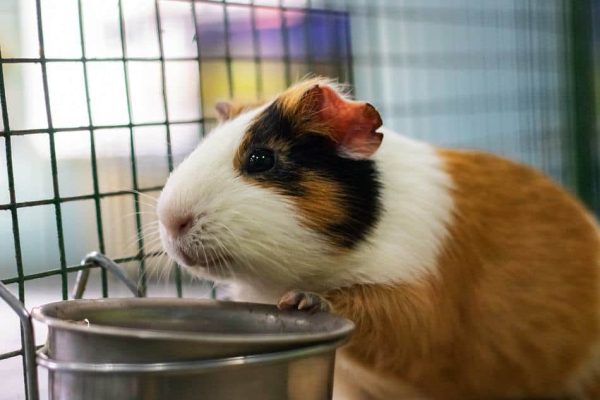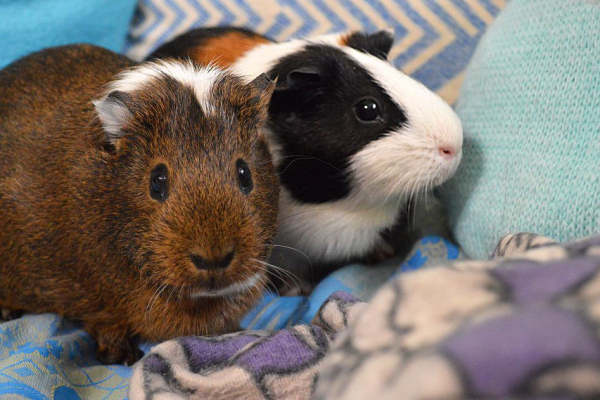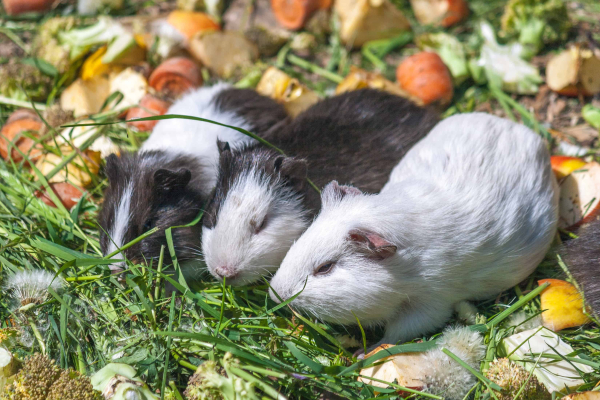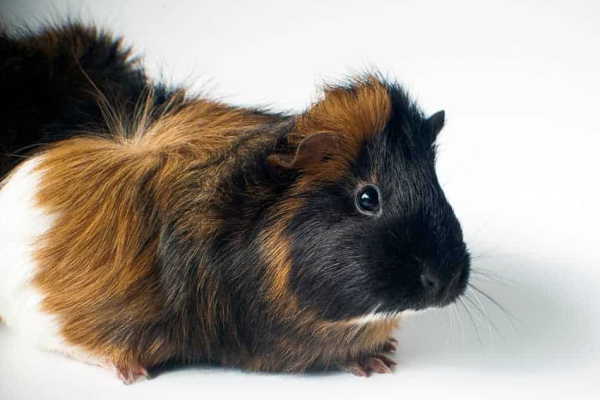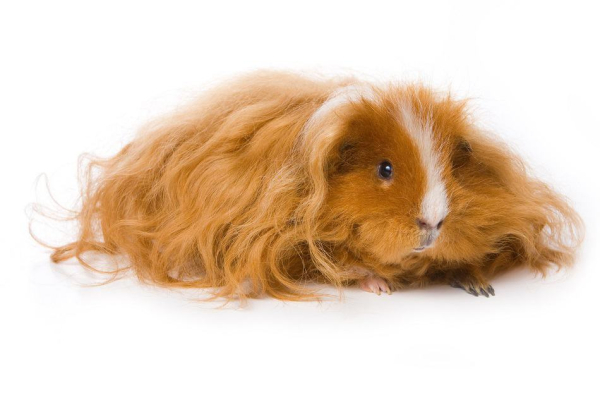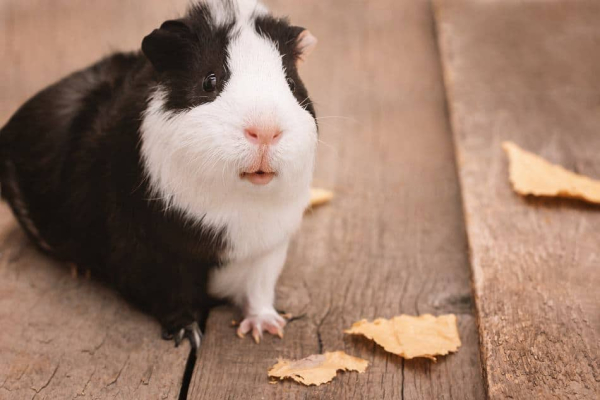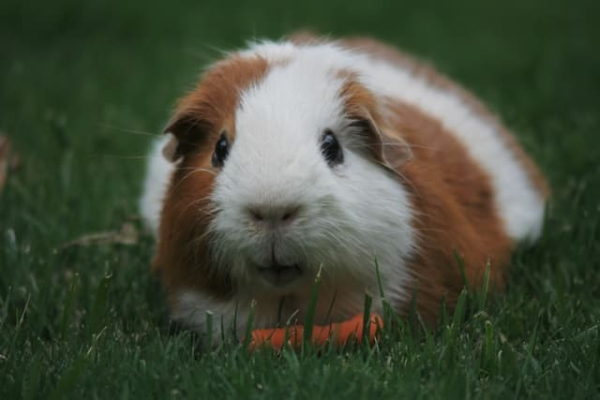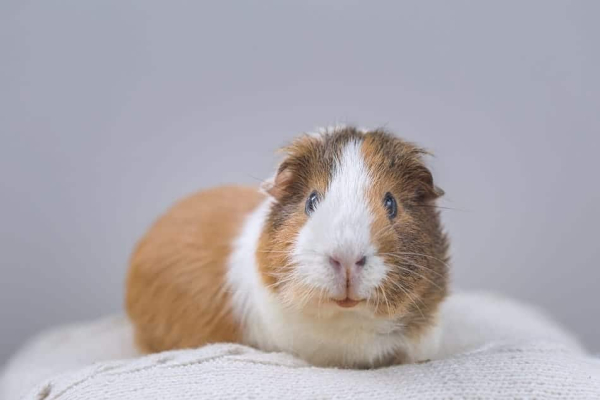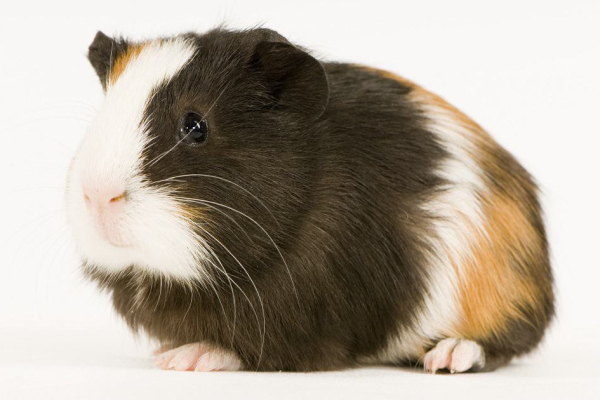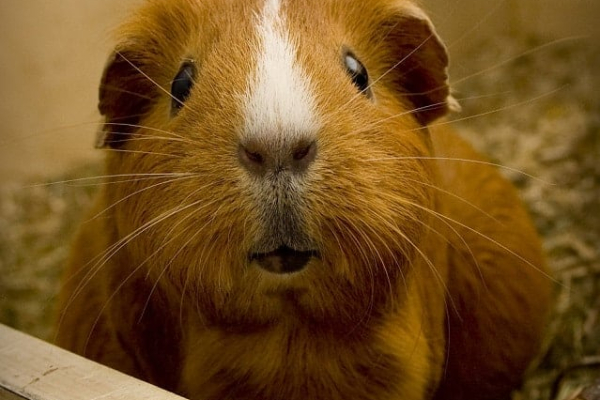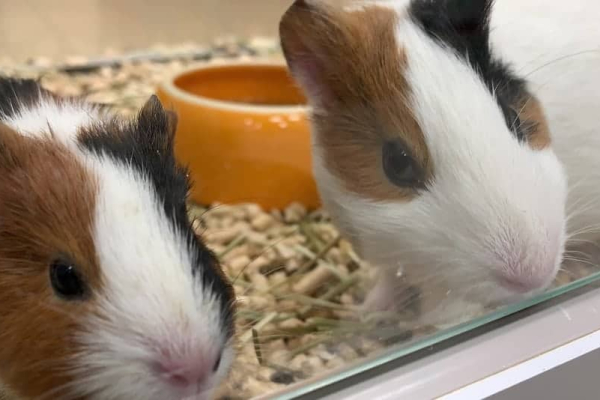
If you have a guinea pig that won’t climb up a ramp or you’ve just bought a ramp and you want your guinea pigs to learn how to go up it, then you’ll want to try to train them to do it.
Thankfully getting your guinea pigs to climb a ramp isn’t too hard to accomplish though.
So to help out fellow guinea pig owners, I did a little bit of research and combined that with what worked best for our guinea pigs to help with training them to go up and down a ramp.
That way it’ll be easier to get them to do it without using up too much of your or your guinea pigs time.
Start With Your Guinea Pig’s Favorite Treats
The first thing that you should do when trying to train a guinea pig to climb up a ramp is to get some of their favorite treats.
That can be vegetables like romaine lettuce, or fruit like apples without the seeds, or whichever treat that you know that they like the most.
The reason why that you’ll need some treats for your guinea pigs is that this is what you’ll use to entice them to try new things like the ramp.
This works because it will help them associate the ramp with a good experience rather than a bad one.
Plus that is what will make them more likely to try going up the ramp for the first time when it’s put into their cage.
Show Your Guinea Pig That You Have The Treats
The next thing that you’ll want to do once you have their favorite treats is to show them the treats so that they know that you have it.
What this will do is let them know that it’s snack time and they might even come up to you for it.
They will be most likely waiting for you to give the treats to them, but try your hardest to resist the urge to feed it to them because that’s not what the treats are for at this point.
Having some of their favorite treats so close to them can get your guinea pigs excited that it’s snack time.
That can get them moving around because they may think that it’s time to get something good to eat and that’s when you’ll really get your guinea pig’s attention.
Place Your Guinea Pig’s Treats On The Ramp And At The Top
Once you have your guinea pig’s attention with the treats then you’ll want to scatter some of it up the ramp. You can also place some treats at the top of the ramp where you’re trying to get them to go to as well.
Plus you can even have more treats waiting for them scattered on the platform at the top of the ramp to entice them even more.
When placing the treats on the ramp you can let your guinea pig see you do it or you can just put it down without them knowing that you’re putting it on the ramp too.
Eventually, your guinea pigs will notice that the treats are on the ramp and then they’ll start to come up to it that way they can investigate.
At this point, some of them will slowly start to walk up the ramp while eating their treats.
However, some guinea pigs will just eat what they can from the floor, and that’s completely normal too.
Let Your Guinea Pig Start Exploring The Ramp
Now what you should do is give your guinea pigs some time to start exploring the ramp so that they can get more comfortable with it.
Sometimes the more adventurous guinea pig will go up the ramp first, and what that can do is show the others that this is something that is possible for them to do too.
So if you have a guinea pig that’s bolder than the others and they are already climbing up the ramp, then that can show the other guinea pigs that the ramp is not going to hurt them and that it is safe.
When one sees the other go up the ramp that can make another guinea pig want to go up it as well.
The reason why is that they’ll hear one of the guinea pigs at the top eating some good food and they won’t want to miss out on all of the fun.
So they will really want some of that food too and then that can make them go up the ramp to see what’s going on.
Keep Putting Treats On The Ramp
Even if one of your guinea pigs climbs up the ramp while some of the others aren’t comfortable with it yet, keep placing some of their treats on the ramp until they get used to it.
So if one of them continuously takes some of the treats without fully going up the ramp then that’s perfectly fine.
Eventually, if you keep putting their favorite foods on the ramp and at the top of it they will start to get the hang of it.
If you notice that one of your guinea pigs still won’t go all the way up the ramp, then try placing the treats further and further up it so that the treats are out of their reach from the floor of the cage.
What this can help your guinea pig do is get them out of their comfort zone as they have to go up further to get the treats that they want.
An Alternative Way To Get Your Guinea Pigs To Use The Ramp
If one or all of your guinea pigs still won’t go up the ramp then you can try an alternative way to get them to use it.
This alternative way usually works best if the area at the top of the ramp is closed off and the only way back down to the bottom of the cage is the ramp.
So what you can do is place your guinea pig on the top level and that will make it so that they have to use the ramp to go back down.
What you’ll be basically doing is the same thing that you would do to get them to go up the ramp but it’s in reverse.
So all that you would have to do is put the treats on the ramp so that they have an actual reason to try to walk down it.
Have even more of their favorite treats waiting for them at the bottom so that they can follow the treat path all the way down the ramp.
This should make it so that your guinea pig has to conquer their fears so that they can get back to the part of a cage where they feel comfortable.
But if you decide to do it this way, then don’t just place your guinea pig at the top and leave them there. Make sure to watch them so that they actually go down the ramp and not get scared and jump down it.
That can be a traumatic experience for a guinea pig so make sure they walk down the ramp and not leap from the second level.
How To Tell If Your Guinea Pigs Are Getting Used To The Ramp
Because the ramp can be such a strange and new object to your guinea pigs they might still be cautious of it, and that’s completely normal.
Luckily there is a very simple way to tell if they are at least making some progress with being able to go up the ramp.
You can tell that they are beginning to get used to the ramp when they start to put their feet on it.
So if they get at least two of their feet on the ramp as they try to get the treats then this can be a very good sign.
It can show you that they are starting to get comfortable with touching it and it being in their enclosure.
Guinea pigs can be curious but also very cautious animals so if they are actively playing around the ramp or touching it, then you’ll know that they’re at least getting comfortable with it.
How Long It Takes For Guinea Pigs To Start Climbing The Ramp
It’s normal to wonder how long it can take for a guinea pig to feel comfortable with their ramp and for them to start going up it.
Most guinea pigs won’t climb all the way up the ramp on the first attempt, and that is completely fine.
Some guinea pigs can start going up the ramp on the first day that you put it into their cage.
While it can sometimes take up to a month for them to do it if you have a guinea pig that is a little timider.
You have to remember that it’s a new process for them so you should give your guinea pigs some time to fully get used to it.
Some Guinea Pigs Will Not Always Want To Use The Ramp
One thing that you should note is that not all guinea pigs will like or want to climb up and down the ramp when you first put it into their cage.
So some of them will take a liking to it very quickly while others will stay away from it for a little while.
As time goes on though, some guinea pigs that don’t initially like the ramp may start to go up it.
Most of the time this usually happens if they see their cage mate confidently go up and down the ramp.
So it’s usually best if you have a little bit of patience with your guinea pig as they take their time figuring it out.
Try not to force them to climb the ramp and let them try it out on their own time because you want your guinea pigs to associate the ramp with good experiences.

